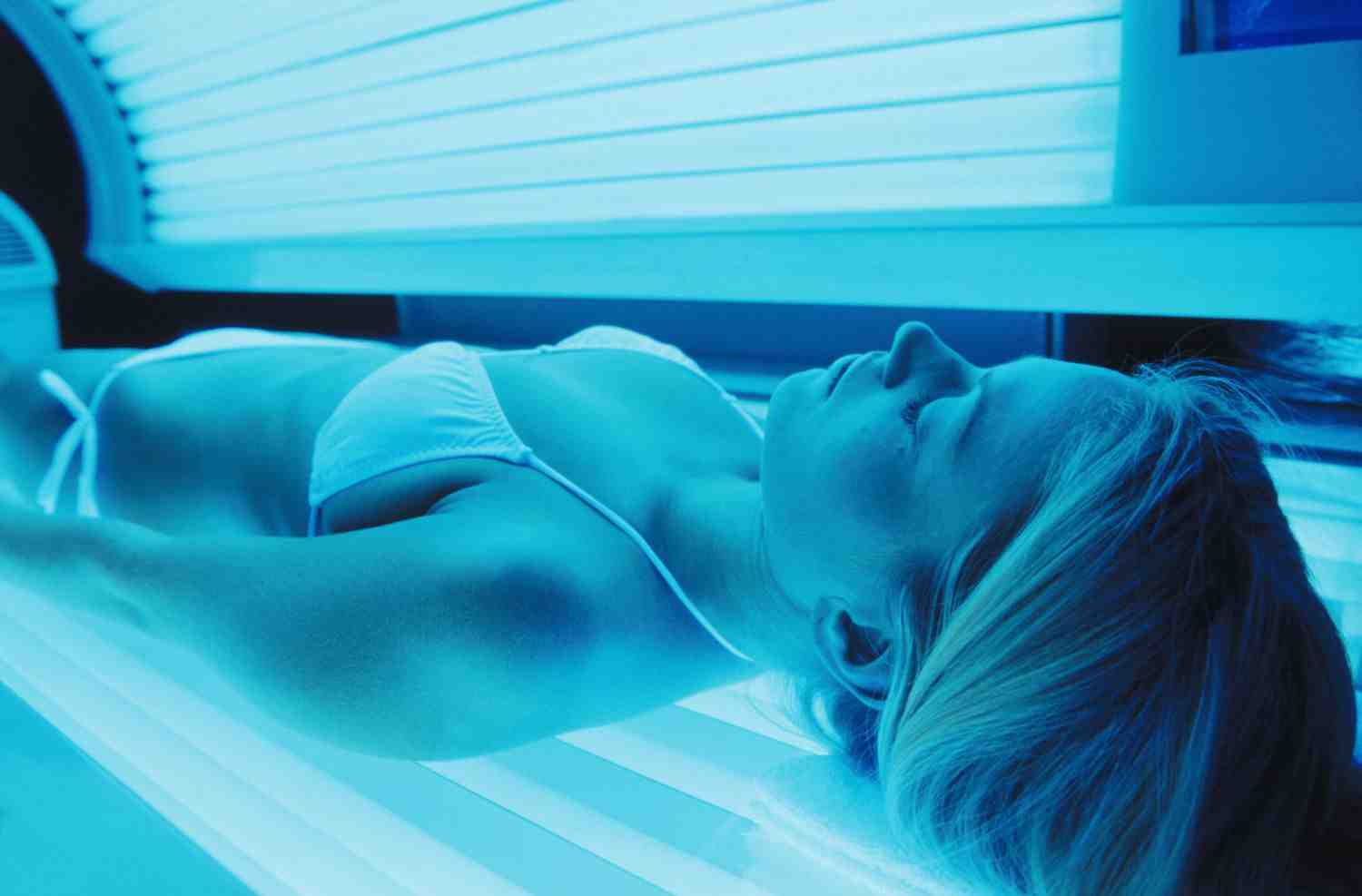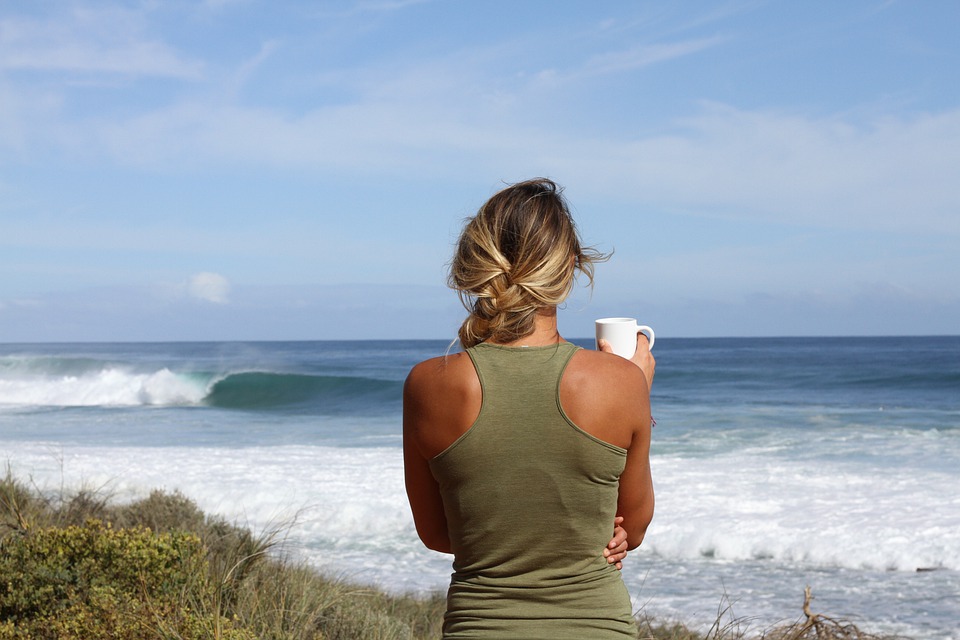
Is using a tanning bed really that bad for you?
Darlings, we’re journeying down a more melanoma-laced route today, covering our beloved, if perhaps slightly diabolical, “tanning bed”. With a line-up rivalling the Lannister family tree, there’s more tanning beds in the US than you could shake a Bard’s quill at, all promising that luscious golden glow. But beware, sweet summer children, the gilded fruit may carry with it a venom most unkind. Let’s lift the hood on the Macbethian duplicity of the tanning bed, its whispered promises, and the string of would-be tragedies it might leave in its wake. In true vintage Smash Hits fashion, we ask – just how much “bad, bloody, and unnatural” is our beloved tanning ritual serving up, courtesy of UV?

Trading sunscreen for sunbeds: a dangerous game of thrones
For those unversed in the lore of the ‘tanning bed,’ let’s be your hip, trashy art guide today. Born of vanity, served by convenience, these tech marvels come packaged in three varieties: high-pressure tanning units, low-pressure beds, and stand-up booths. All share a most loathsome sin – pumping out UVA and UVB rays more intense than the sun, in a close-quarters duel with your delicate derma.
Is it all just a tempest in a tanning booth? Not so fast, dear reader. Numerous studies, none more vociferous than the International Agency for Research on Cancer (IARC) report of 2009, implicate tanning bed use in melanoma’s upward swing—in fact, it’s the second most common cancer in young women. Starring role in skin cancer, premature aging, eye damage – the ‘tanning bed’ lists amongst its IMDb credits—are certainly not what our bronzing beauty promised at the outset.
Smitten by the sun-kissed promise but despairing at the price? Fear not, pop-culture mavens, for alternative narratives exist. Regular skin checks and staying within recommended tanning sessions can halt our beloved ‘tanning bed’ from turning into a gory Greek tragedy. However, the academy award for safe-tanning surely rests with the golden oldies – sunscreen, sun-smart clothing, and nature’s own vitamin D provider, the Earth’s star itself.
So, are tanning beds bad for you? Unanimously, studies cry yes—with skin cancer rates rising, the false glow of the tanning bed seems a solar soliloquy best left unsaid. Remember, pop-culture devotees, disparage not the pale, for therein lies true beauty, shielded from the harmful radiance of our UV overlords. The choice, ultimately, lies with you. And as with any Game of Thrones, choose wisely.

Basking in danger: the sordid tales of the tanning bed
The highly hyped ‘tanning bed’, my dear pop-culture enthusiasts, exists in three not-so-distant relatives littering the US landscape; high-pressure tanning units, low-pressure tanning beds and stand-up booths. They might be as different as Jon Snow and Tyrion Lannister, but boy, do they share some unchecked incestuous characteristics – relentless pelting of UVA and UVB rays, ushering a high-noon duel with our delicate derma.
Alas, whispers from the realm of science echo the foreboding tales of our beloved ‘tanning bed’. Examined under the piercing gaze of numerous studies, most notably the hard-hitting International Agency for Research on Cancer’s 2009 report, it’s become increasingly clear that our bronze beds are probably feeding the beast of melanoma. Tragic performances in skin cancer, premature aging and even eye damage- and you thought the Red Wedding was a shocker!
Lament not fair freefolk, the doom is not written in stone. Ensuring regular skin checks and keeping your tanning sessions to a bare minimum are tried and tested ways of preventing our ‘tanning bed’ sensation from morphing into a horror show. But the golden globe for skin health precaution goes to the classic triumvirate: sunscreen, UV protective clothing and a careful dance with our great celestial torch above.
So, the million-dollar question, are tanning beds really bad for you? The answer, my sweet summer child, is inked in the chronicles of science – yes. With a fervent surge in skin cancer statistics, the once enchanting glow of the tanning bed now seems more like a dragon’s fiery breath best avoided. Remember, dear dwellers of pop culture, the pale are not the sickly of Westeros, they’re often the smart and the beautiful, bearers of skin untouched by the harsh reign of UV. The choice at the end of the day is a game of thrones, and every choice has consequences. Choose wisely.

Skinning the sunbed snake: an expose on the enigma of tanning beds
Enter the realm of the ‘tanning bed,’ a seductive siren singing promises of a sun-kissed glow. Three forms reign supreme in our American wonderland: high-pressure units, low-pressure lairs, and stand-up sentinels. United in their UV mantra, they muster UVA and UVB light brigades – their volume dwarfing our solar overlord’s offerings – challenging your delicate skin to a battle royal.
Dark clouds gather over our luminous dream as studies cry havoc, with the International Agency for Research on Cancer’s 2009 report leading the choir. The unsavory truths of our sunbed saga read like a gothic horror: a starring role in skin cancer’s ascension, premature aging posters, and eye damage cameos. The ‘tanning bed,’ it seems, has a list of transgressions longer than a Tarantino credit sequence.
Before you doom-scroll into a dark night, there’s a glimmer of hope on the horizon. Regular skin checks, disciplined adherence to suggested tanning schedules promise a pause in our ‘tanning bed’ drama. Yet, the Oscar for best safety practice goes to the classics: sunscreen, hip sun-smart threads, and basking in the gentle embrace of nature’s original big screen, the sun.
So, the question on everyone’s sunburned lips, are tanning beds really that bad for you? The jury has spoken, echoing a resounding yes. As skin cancer statistics spike, the once alluring glow of the ‘tanning bed’ now flickers like a neon sign in a noire novella. Remember, fellow pop-culture navigators, in the pale there’s beauty, untouched by the harsh glare of our UV nemesis. In this game of tones, the choice remains yours. Choose well, my friends.

‘Till the UV rays do us part: signing off on the tanning bed
Well, pop culture aficionados, we’ve danced around the golden inferno, flirted with the UV-driven demons, and held aloft the dark underbelly of the ‘tanning bed.’ These divas of the tanning world—high-pressure tanning units, low-pressure beds, stand-up booths—might seem as diverse as the Avengers roster, but they’re certainly not here to save the day.
Once calculated under the merciless lens of scientific studies, the sweetheart that is our ‘tanning bed’ reveals a rather sinister alter ego. Emblazoned across the marquee of the melt-your-skin horror show are roles in skin cancer, early aging and eye damage. Spoiler alert: It’s not the Hollywood ending we hoped for.
But don’t unfurl your white flags of surrender just yet, UV junkies. There are ways to reign in this runaway ‘tanning bed’ plot—regular skin checks, sticking within recommended limits can keep our tanning bed tale from tail-spinning into an outright slasher. But let’s be real, folks—the Oscar for best Achievement in Skin Protection remains with the old-time favorites: sunscreen, fashionable UV garb, and letting old Sol deliver your dose of Vitamin D.
So, drums roll, please, is using a tanning bed really that bad for you? Studies across the board shout out a resounding “Yes!” With skin cancer’s star on the rise, the tantalizing allure of the tanning bed dims into a phantom’s glow best left to the spectral realm. Listen in, pop culture pilgrims—pale is the new tan. Embrace it, flaunt it, and remember the UVA battlefield is one best side-stepped. After all, it’s your skin in this cosmic slot-machine. Pull the lever wisely!



